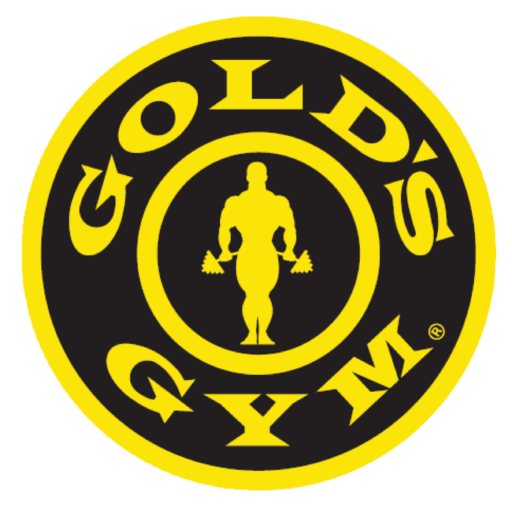Have you ever found yourself wondering if lifting weights is just for bodybuilders or athletes? Maybe you’ve seen people in the gym effortlessly lifting heavy weights and thought, “Could I ever do that?” Or perhaps you’ve felt the urge to start strength training but didn’t know where to begin. You’re not alone! Many people share these questions.To shed light on these common concerns, we sat down with Aryan Dangol, a seasoned gym trainer, personal trainer, and powerlifter with four years of experience in the fitness industry. Aryan has been helping people achieve their fitness goals at Gold’s Gym Nepal for the past six months. His passion for fitness and dedication to his clients make him the perfect guide for anyone looking to start their strength training journey.
In this blog, Aryan shares his insights on what strength training is, its numerous benefits, common misconceptions, and how to get started safely and effectively. Whether you’re a beginner or looking to refine your routine, Aryan’s expertise will provide you with valuable information to help you succeed.
What is Strength Training?
Strength training, often referred to as resistance training, is a type of physical exercise specializing in the use of resistance to induce muscular contraction, which builds the strength, anaerobic endurance, and size of skeletal muscles. It’s a broad topic, with different trainers having varying opinions on what it entails.

To understand strength training, we first need to understand strength itself. Strength can vary greatly depending on the sport or activity. For instance, a boxer, powerlifter, weightlifter, and footballer all exhibit strength, but their training focuses on different aspects to enhance their specific performance.
For beginners aiming for general strength, we often start by understanding their goals. Typically, weight lifting is recommended as it promotes muscle development and increases bone density, crucial for overall strength and health.
Strength Training vs. Cardio
Cardio and strength training serve different purposes and offer unique benefits. Cardio exercises, such as running or cycling, primarily elevate your heart rate and improve cardiovascular health. They’re excellent for heart health, endurance, and burning calories.
In contrast, strength training focuses on muscle gain and bone protection. It involves lifting weights or using resistance to improve muscle mass, bone density, and overall physical strength. Both forms of exercise are important and can complement each other in a well-rounded fitness routine.
Benefits of Strength Training
Strength training offers numerous benefits that can transform your overall health and well-being. According to the World Health Organization (WHO), 150-300 minutes of exercise per week is recommended for everyone to maintain optimal health.
Bone Density Increases
Strength training enhances bone density, reducing the risk of osteoporosis and fractures, especially as you age.
Muscle Mass Increases
Regular strength training builds muscle mass, which is essential for a healthy metabolism and overall strength.
Endurance Increases
Contrary to popular belief, strength training also improves muscular endurance, allowing you to perform daily activities with ease.
Effortless Normal Activity
When done correctly, strength training makes everyday tasks like lifting groceries or climbing stairs much easier, reducing the risk of injury.
Reduced Back Pain
A strong core and back can significantly reduce or eliminate back pain, a common issue for many people.
Lower Risk of Diseases
Strength training has been shown to lower the risk of chronic diseases such as diabetes, heart disease, and obesity.
Improved Mobility and Flexibility
Regular strength training improves your range of motion and flexibility, enhancing overall mobility.
Mental Health Benefits
Exercise, including strength training, is known to improve mental health by reducing anxiety, depression, and stress levels. It also boosts self-esteem and cognitive function.
Misconceptions and Myths of Strength Training
One common misconception is that muscle bulk equates to strength. However, this isn’t always true. While someone with large muscles may be strong, they might lack mobility and flexibility compared to a smaller individual with a well-rounded training regimen.
Strength cannot be compared across individuals solely based on appearance. Factors such as muscle endurance, flexibility, and specific training goals play significant roles in overall strength and fitness.

Getting Started with Strength Training
At Gold’s Gym Nepal, our trainers are dedicated to guiding newcomers through the process of starting strength training safely and effectively. Here’s how you can begin:
Initial Steps
Consult a Trainer: Seek advice from a qualified trainer to create a personalized plan.
Set Goals: Define your fitness goals, whether it’s general strength, muscle gain, or improving specific athletic performance.
Assess Technique: Ensure your form and technique are correct to prevent injuries and maximize effectiveness.
We’ll ask about your age group to tailor the plan according to your requirements.
Technique and Form Assessment
Initially, a full body workout routine is planned to give your body a hang of it with light intensity weights. Ensuring proper technique and form is essential for preventing injuries and maximizing results. We will guide you through each exercise, focusing on correct posture and movement patterns. We’ll work with you until your technique is perfect.
Training Methods
Then, we switch to a training method which will be perfect for you and your body.
Body-Part Split: Focus on one body part per day (e.g., chest, arms, legs).
Combination Training: Combine 2-3 body parts in a session, repeating twice a week.
Circuit Training: Perform a series of exercises targeting different muscle groups in succession with minimal rest.
Sample Plan for Newcomers
To build a solid foundation, we’ll start with a full-body workout routine targeting one muscle group at a time. You’ll perform a variety of exercises that engage multiple muscle groups, with rest days in between to allow for recovery. This routine will help improve overall strength and endurance.
Once you’ve mastered the basics, we’ll customize a plan that suits you best. Here are two options we may explore:
Option 1: Push-Pull-Leg Method
- Pushing Muscles (Sunday): Chest, Triceps, Shoulders
- Pulling Muscles (Monday): Back, Biceps
- Legs (Tuesday): Focus on lower body exercises
Option 2: 4-Day Split
- Day 1 (Wednesday): Upper Body
- Day 2 (Thursday): Lower Body
- Day 3 (Friday): Rest
- Day 4 (Saturday): Upper Body
- Day 5 (Sunday): Lower Body
- Day 6 (Monday): Rest
- Day 7 (Tuesday): Rest
Research suggests that targeting each muscle group twice a week results in more gains. Therefore, both options are designed to provide adequate rest while allowing for targeted muscle growth and recovery.
FITT Principle for Strength Training
The FITT principle is a guideline used by gym trainers to plan effective strength training workouts. FITT stands for Frequency, Intensity, Time, and Type, which are important factors to consider when designing a workout routine.
Frequency: This refers to how often you do strength training exercises each week. For most people, 2 to 3 sessions per week is recommended. It’s important not to do strength training on consecutive days to allow your muscles time to recover.
Intensity: Intensity is about how hard you work during your strength training session. It depends on factors like the amount of weight you lift and the number of sets and reps you do. If you’re lifting heavy weights, you might do fewer sets and reps, while with lighter weights, you can do more.
Time: This is the duration of your strength training session. It varies based on the intensity of your workout. If you’re doing a high-intensity workout, you may need less time, while a lower-intensity workout might take longer.
Type: Type refers to the kinds of exercises you do during your strength training. It could include using free weights, machines, resistance bands, or body-weight exercises like push-ups and chin-ups.
When applying the FITT principle to your strength training, remember to choose exercises and intensities that suit your fitness level and goals. It’s also important to listen to your body and adjust your routine as needed to avoid injury and achieve the best results.
Considerations and Precautions Before Starting Strength Training

Physical Injuries and Health Issues
Be aware of any existing injuries or health conditions (e.g., lower back pain, knee pain, past surgeries). Consult a healthcare professional if necessary.
Flexibility and Mobility
Perform flexibility and mobility tests to understand your range of motion. Train within your available range to avoid injuries.
Exercise Restrictions
Certain exercises might be restricted based on your bodily anatomy and physical condition. Always prioritize safety.
Nutrition, Sleep, and Strength Training
Nutrition and sleep are critical components of an effective strength training program. Without proper nutrition, you won’t see the benefits of your training.
Nutrition
Carbohydrates and Fats: Provide energy for your workouts.
Protein Intake: Essential for muscle repair and growth. Aim for 1 gram of protein per kilogram of body weight. For a 50 kg individual, that’s 50 grams of protein per day.
Sleep
Adequate sleep is crucial for recovery and muscle growth. Aim for 7-9 hours of sleep per night.
Recovery, nutrition, and training are the three pillars of a successful strength training regimen. So, only focusing on strength training will only do you harm.
Strength Training for Different Demographics
Pre-teens and Teens
During adolescence, teenagers are still developing physically, and it’s crucial to prioritize proper technique and form over lifting heavy weights. Building a strong foundation through correct movement patterns and technique lays the groundwork for future strength gains and reduces the risk of injury.
We may focus on body-weight exercises, resistance bands, and light free weights to develop strength while emphasizing good form.
Adults (16+):
As adults, individuals have typically reached physical maturity and can begin to incorporate heavier weights into their strength training routine. The focus shifts towards gradually increasing weight intensity to challenge muscles and stimulate growth.
We work with adults to set realistic goals based on their fitness level and gradually progress the weight lifted as strength improves. Consistency and proper form remain essential to prevent injuries and maximize results.
Older Adults:
For older adults, maintaining strength and muscle mass is crucial for overall health and independence. However, they may be more susceptible to injuries and joint issues. Therefore, strength training programs for older adults often prioritize lighter weights with higher repetitions to minimize stress on joints while still providing an effective workout.
The emphasis is on improving strength, balance, and mobility to support daily activities and reduce the risk of falls. We may also incorporate exercises that target specific areas of concern, such as core stability and flexibility.
Conclusion
Strength training is a powerful tool for improving your physical and mental health, regardless of age or fitness level. By understanding the basics, setting clear goals, and following a structured plan, you can reap numerous benefits. Remember to prioritize safety, nutrition, and recovery to maximize your results.
Ready to start your strength training journey? Visit Gold’s Gym Nepal for personalized training plans and expert guidance.
FAQs: Expert Answers
How can someone determine the appropriate amount of weight to use for strength training exercises?
Start with a weight you can lift for 12-15 reps comfortably. If you can only manage 6-8 reps, the weight might be too heavy for beginners.
How do we increase the weights during strength training?
Use the concept of progressive overload. Gradually increase the weight or repetitions every week or two. For example:
Week 1: 12 kg – 10 reps
Week 2: 12 kg – 12 reps
Week 3: 12 kg – 15 reps
Week 4: 15 kg – 10 reps
If progress stalls, reduce rest time, add an extra set, or increase exercise tempo.
Should I do strength training workout in the morning or at night?
The timing doesn’t matter as long as it fits your schedule and energy levels. Some prefer mornings, while others perform better in the evenings.
Can I do strength training exercises every day?
Yes, but ensure you allow adequate recovery time and don’t focus on the same body part daily.
How many sets and reps should I do?
Typically, 3 sets of 8-12 reps for general strength. For endurance training, aim for 15+ reps.
Is it okay to feel sore after a workout?
Soreness is common, especially with new or intense exercises. Ensure proper form, nutrition, and recovery to minimize soreness.
Will I gain body fat if I stop strength training?
You may lose muscle mass and strength, but whether you gain fat depends on your overall lifestyle and diet.




2 thoughts on “Strength Training: Why and How should you do it?”
Great article thank you. keep them coming
There are many ways using that you can enhance the strength of your overall gym performance. But always keep using the best and lightweight shoes to enhance overall performance like Relaxo shoes. Thanks for the info.